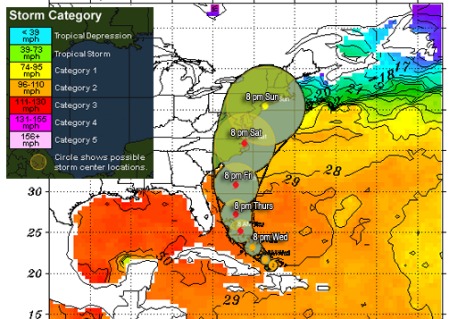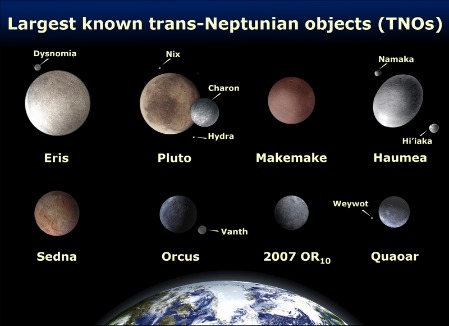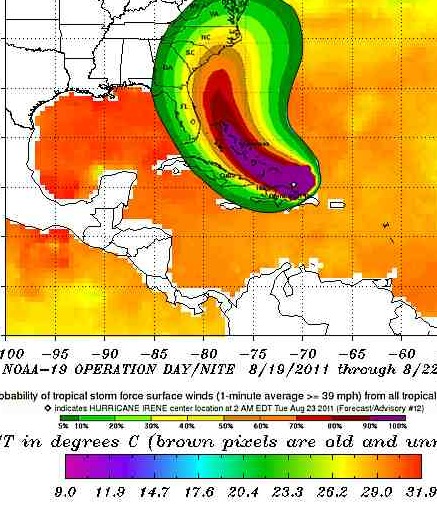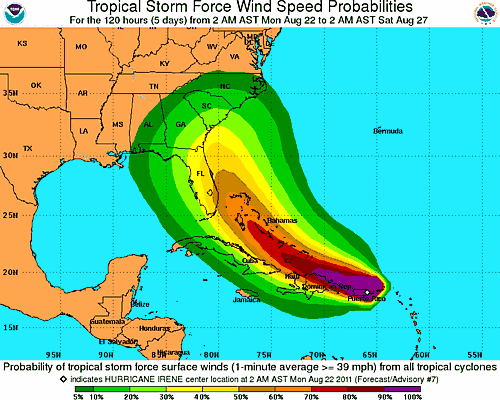Hurricane Irene intensified back to Category 2 status and may reach Category 3 today. The storm has broken away from island highlands farther to the south and now nothing but the Bahamas lays between Irene and warm water hurricane paradise. Irene could well reach Cat 4 strength over the next several days and make landfall as a powerful, deadly storm.
The track above superimposed over NOAA’s sea surface temperature data shows the forecast track as of early this morning. While the centerline has shifted ever so slightly east, there’s still a great deal of variability three or more days out, represented by the growing size of the circles. Irene is forecast to pose a major threat to North Carolina, especially the Outer Banks, eastern Virginia, and the Norfolk to DC region. If the storm follows the current forecast it skirts Delaware and wanders back out over water plenty warm enough to sustain or accelerate the convection cycle driving the cyclone. Irene could then go on to threaten the Long Island region right up through Maine as a hurricane or a tropical storm.

Population density in 3-d, derived from Time Magazine and the US Census
The diagram above, produced by Time magazine using US Census data, I think, shows why this track is such a potential disaster. A Cat 3 or 4 would be deadly wherever it hits, but even a weaker storm rolling up the east coast could rank among the costliest hurricanes of all times due to the sheer population density. If Irene were to strike parts of Massachusetts, New York, or Connecticut for example, and only do minor roof or wall damage to one home in 20, that’s still hundreds of thousands of homes that will need a new roof. The same applies for signs, traffic lights, telephone poles, mobile homes, metal sheds, etc. The costs mount up fast.
I’ll have updated information including an intensity forecast throughout the day.









